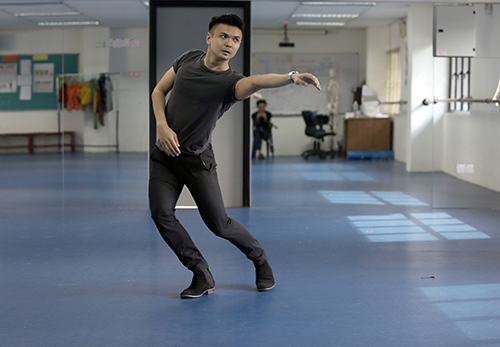As the saying goes: “Dance like nobody’s watching. Love like you’ll never be hurt. Sing like no one is listening, and live like it’s heaven on earth”.
For 29-year-old contemporary dance choreographer Kenny Shim, his passion is apparent and his work – provocative yet beautiful, liberated, symbolic and needless to say, contemporary.
He is an alumnus at the prestigious London’s Trinity Laban Conservatoire of Music and Dance, and pursued his Masters in Contemporary Dance Performance at the London Contemporary Dance School.
Last May, Shim choreographed his first production, titled Triple Bill of Contemporary Dance Works.
“I’ve never been exceptionally well-versed in communication, but dance has always been the outlet for me to express the overarching topics I’m interested and want to discover,” Shim asserts.
What makes contemporary dance different?
“Primarily, choreographers and dancers are trying to find a new voice for themselves – [using] dance movements as a visual language.
“For example, the ballet dance itself is a language, as soon as you see ballet movements, you know for a fact that it is ballet.
“We want to move from a generic language to a unique language. At the same time, it opens up a whole new world of what it could be, because contemporary dance can be anything and everything.
“Contemporary dance itself is derived from ballet; the founders of contemporary dance have a really strong background in ballet. They were ballet dancers at one point, but they grew tired of speaking someone [else’s] voice.”
How was the response to your debut production?
“I’m so happy that people responded well to the production. After the performance, there was a Q&A session, much of it was the audience questioning things – ‘How did it come about? Why did I as the choreographer present such a work?’
“So there was this conversation between the audiences’ viewership and the choreographer’s authorship.
“The first piece of the three-part performances, Winged Wolves and the Bamboo Mew was inspired by a German play, Spring Awakening, and challenges the idea of sexuality and recognising the change of time and the human body. Ultimately, it speaks of the [different] mindsets between generations.
“Through my work, I’m not presenting narratives, but rather concepts which are nothing new, if that makes sense. What the audience sees is entirely up to them.”
Are the performances integrated?
“They are absolutely different, only integrated as a triple bill. I intentionally made it separate, partly because it was my debut production and I wanted to test my capacity in drawing out various types of contemporary dance within my style.
“The second piece, Pieces of Three Movements was about the aesthetic of body movements. We played a lot with technology, shadows, and images.
“The last piece, Rite is a restage. It is a piece that I’ve done [before] in the UK, created to challenge the idea of masculinity, framed within the idea of the rite of passage from a boy to a man.
“The original Rite [was performed by] seven men but due to the lack of male dancers here, I had to reimagine the piece with four male and three female dancers, which then posed entirely different questions about close proximity, and [the] interaction when a male dances with female, and when a male dances with a male.”
How should the audience interpret contemporary dance?
“It’s best to not take it too seriously, take it with a light heart, watch it with an open mind, with an absolute blank slate, and try not to have any prejudgement.
“When you try your best to really interpret every single thing, then sadly you’re missing out on a lot ... because by the time you understand point A, the dancers are already dancing in point Z. It’s okay to not understand.
“The reason why we have Q&A sessions is to allow the audience to ask [about the dance]. By knowing how the dance came about, you’ll begin to understand, or even if you don’t, you’ll appreciate the level of effort, technical work and craftsmanship that goes into it.
“All that makes interpreting performances a lot easier. Always ask the dancers and the choreographers if you’re curious about anything, because trust me they are more than willing to talk to you. But somehow, there’s always a wall between the audience and the dancers that [will never be] breached.”
What are your thoughts on Malaysia’s contemporary dance scene?
“There’s tremendous room to improve. The positive part is that all the artistes are so passionate in doing what they do.
“With the new Malaysia, I do wish that it will improve. The new minister of education spoke of new ways of educating, and if this message goes to him [I hope he will] really consider [improving the] arts.
“[Almost everything] we can do, artificial intelligence does it better, but artistry is something that is really innate within human beings, and I wish education [could] recognise that.”













